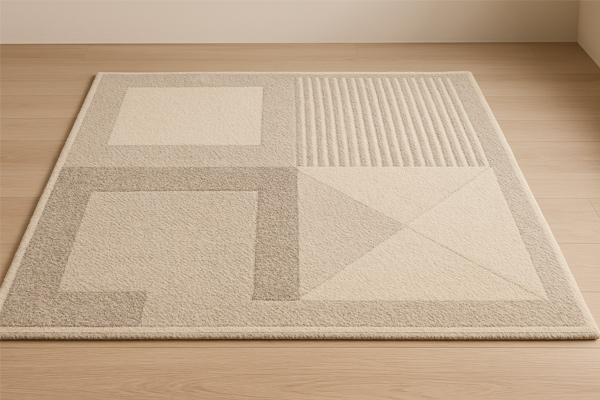Area rugs are decorative textiles that provide both aesthetic appeal and functionality to spaces within homes and commercial environments. These versatile items are typically placed on the floor and can serve to define areas in open-plan spaces, enhance decor, or provide comfort underfoot. Commonly used in living rooms, bedrooms, dining areas, and entryways, area rugs play a crucial role in creating a cozy atmosphere while protecting flooring.

Contents
Definition of Area Rugs
An area rug is defined as a piece of fabric that is specifically designed for flooring, typically covering a relatively small area compared to wall-to-wall carpeting. Unlike carpets that may be installed throughout an entire space, area rugs are usually placed in selected spots to complement furniture arrangements or interiors. They come in various sizes, shapes, materials, and colors, allowing for significant customization in decor.
General Characteristics
Area rugs can vary significantly in thickness, pile height, and material. Many feature intricate designs or patterns that reflect cultural styles, while others may emphasize solid colors for a more contemporary appearance. Regardless of design, they often possess a backing material that provides support and stability, preventing slipping or sliding on the floor beneath.
History and Origin
The use of rugs dates back centuries, with significant early evidence found in regions like Persia and China, where they were handwoven from wool, silk, and cotton. Initially, these textiles were exclusive to the affluent classes and served as status symbols. Over time, the industrial revolution facilitated mass production, leading to the availability of rugs to a broader audience.
With advancements in technology, the material composition of area rugs evolved, introducing synthetic fibers that offered additional durability and affordability. As design trends progressed, area rugs became integral decorative elements, merging aesthetics with practicality.
Types of Area Rugs
There are various types of area rugs, each with unique features suitable for different tastes and needs:
Wool Rugs
Wool rugs are celebrated for their durability, softness, and natural insulating properties. They often showcase intricate designs and are ideal for high-traffic areas.
Synthetic Fiber Rugs
Made from materials like nylon, polyester, or polypropylene, synthetic fiber rugs are resistant to stains, moisture, and fading. Their affordability and easy maintenance make them popular in households with children and pets.
Natural Fiber Rugs
These rugs are made from materials such as jute, sisal, and seagrass. They are environmentally friendly and add a rustic touch to any room. However, they may require more care to avoid damage.
Persian and Oriental Rugs
Known for their intricate patterns and craftsmanship, these rugs often feature rich colors and motifs that tell a story. They can be considered investment pieces due to their enduring value.
Uses and Benefits
Area rugs serve multiple purposes in daily life, such as:
- Defining Spaces: In open-concept homes, area rugs can delineate separate areas, creating warmth and intimacy.
- Adding Comfort: Rugs offer cushioning underfoot, making spaces more comfortable to walk on, especially in homes with hard flooring.
- Aesthetic Enhancement: They can significantly elevate the visual appeal of a room, acting as a focal point or an accent that complements existing decor.
Additionally, area rugs can help with sound absorption, reducing echo in large spaces and enhancing overall acoustics.
How to Choose and Use Area Rugs
When selecting an area rug, consider factors like size, material, color, and design:
- Size: Ensure the rug fits well with your furniture layout—typically, all furniture legs should be on the rug or at least the front legs.
- Material: Choose based on where it will be placed. For example, high-pile rugs are great for living rooms but may not be suitable for dining areas.
- Color and Design: Pick colors that coordinate with your decor and patterns that resonate with your personal style.
Best Practices for Using Area Rugs
Place rugs strategically to unify the decor and make spaces inviting. Use rug pads underneath to prevent slipping and add cushion.
Maintenance and Cleaning
Proper maintenance is essential to prolong the lifespan of your area rug:
- Regular Vacuuming: This removes dirt and dust, preventing it from settling into the fibers.
- Spot Cleaning: Address spills immediately with appropriate cleaning solutions, while avoiding harsh chemicals that can damage the fibers.
- Professional Cleaning: For thorough cleaning, consider hiring professionals appointed for rug care, especially for intricate designs or natural fibers.
Conclusion
In summary, area rugs are highly versatile decorative elements that enhance both the aesthetics and functionality of spaces. With various types available, understanding their uses, benefits, and maintenance practices is crucial for choosing the right rug that aligns with your lifestyle and design preferences. By following these guidelines, you can ensure your area rugs remain a cherished part of your home decor for years to come.
